Introduction
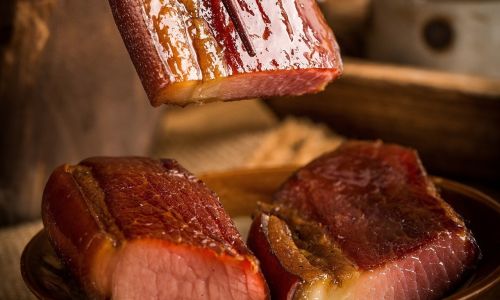
Smoked bacon, a culinary delight enjoyed worldwide, combines the savory flavors of salt, spices, and smoke into a single, mouthwatering strip of meat. Whether you’re a seasoned chef or a home cook eager to experiment, mastering the art of crafting smoked bacon can elevate your culinary skills and provide a delightful treat for friends and family. This comprehensive guide will walk you through every step of the process, from selecting the right pork belly to perfecting your smoking technique. By the end, you’ll be confident in your ability to create bacon that rivals even the best artisanal products.
Chapter 1: Choosing the Perfect Pork Belly
The foundation of any great bacon is the quality of the pork belly you start with. Here are some key considerations to make when selecting your meat:
1 Breed and Feed
The breed and diet of the pig can significantly impact the flavor and texture of the bacon. Heritage breeds, such as Berkshire, Duroc, and Tamworth, are often prized for their rich flavor and marbling. These breeds tend to be fed a natural diet, which can enhance the taste profile.
2 Fat-to-Meat Ratio
The ideal pork belly should have a balanced fat-to-meat ratio. A good rule of thumb is to look for a belly with about 50% fat and 50% lean meat. This ensures that your bacon will be juicy and flavorful, with a pleasant texture.
3 Freshness and Source
Always choose fresh, high-quality pork belly from a reputable source. Freshness is crucial, as stale or improperly stored meat can develop off flavors. If possible, source your pork belly from a local farm or butcher who can provide information about the pig’s breeding, feeding, and handling.
Chapter 2: Preparing the Pork Belly
Once you’ve selected your pork belly, it’s time to prepare it for the seasoning and smoking process.
1 Trimming
Begin by trimming any excess fat, sinew, or skin from the pork belly. Aim for a uniform thickness, as this will ensure consistent cooking and smoking.
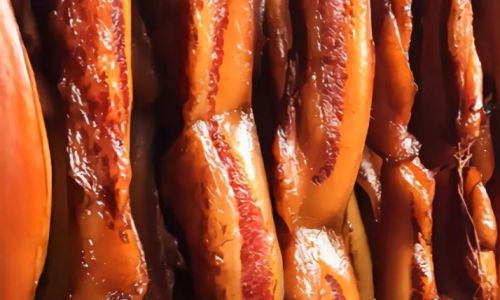
2 Brining (Optional)
While not traditional for all bacon recipes, brining can add moisture and flavor to your final product. A simple brine solution of salt, sugar, and water can be used. Soak the pork belly in the brine for several hours or overnight in the refrigerator.
3 Rinsing and Drying
After brining (if you choose to do so), rinse the pork belly thoroughly under cold water to remove any excess brine or blood. Pat it dry with paper towels to ensure that the seasoning adheres evenly.
Chapter 3: Seasoning the Pork Belly
Seasoning is where the magic happens. The right blend of salt, sugar, and spices can transform your pork belly into a flavorful masterpiece.
1 Basic Seasoning
A classic bacon seasoning consists of kosher salt and granulated sugar, mixed in equal parts. This simple combination creates the classic sweet-and-salty flavor profile that defines bacon.
2 Advanced Seasoning
For more complex flavors, experiment with adding spices such as black pepper, paprika, garlic powder, and mustard seeds. You can also incorporate herbs like thyme or rosemary for an aromatic twist.
3 Applying the Seasoning
Evenly distribute the seasoning mixture over the entire surface of the pork belly, ensuring that all areas are well-coated. Use your hands to gently massage the seasoning into the meat, which helps it to penetrate deeper.
Chapter 4: The Smoking Process
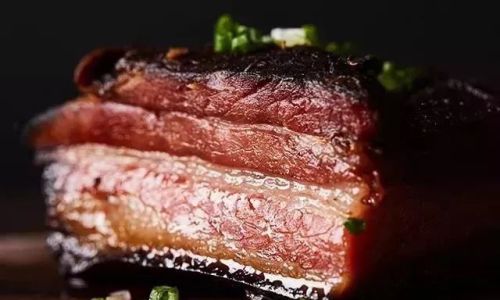
Now it’s time to introduce the element that gives smoked bacon its unique character: the smoke.
1 Choosing a Smoker
There are several types of smokers available, each with its own set of pros and cons. Charcoal smokers provide an authentic, smoky flavor, while electric smokers offer convenience and temperature control. Pellet smokers, which use wood pellets as fuel, offer a balance between flavor and ease of use.
2 Preparing the Smoker
Before you begin smoking, ensure that your smoker is clean and properly seasoned. Preheat the smoker to the desired temperature, typically between 200°F and 250°F (93°C to 121°C). This range allows the fat to render slowly, ensuring a juicy, tender final product.
3 Selecting Wood
The type of wood you use for smoking will greatly influence the flavor of your bacon. Oak, apple, and hickory are popular choices, each imparting its own unique taste. Experiment with different woods to find your preferred flavor profile.
4 Smoking Time and Temperature
The smoking process can take several hours, depending on the thickness of your pork belly and the desired level of smoke flavor. Aim for a smoking time of around 4 to 6 hours, adjusting as needed. Maintain a consistent temperature throughout the process to avoid overcooking or undercooking.
Chapter 5: Finishing Touches
Once your bacon has reached the desired level of smoke flavor and doneness, it’s time to finish it off.
1 Cooling
Remove the bacon from the smoker and let it cool to room temperature on a wire rack set over a rimmed baking sheet. This allows any excess fat to drip off, ensuring a crispier final texture.
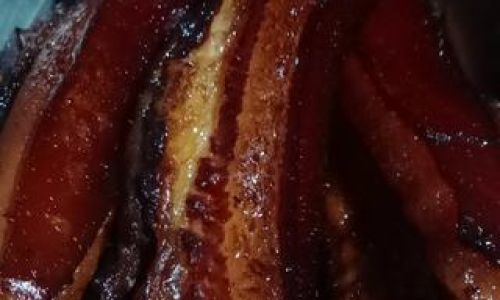
2 Refrigeration
Once cooled, wrap the bacon tightly in plastic wrap or store it in an airtight container and refrigerate. Properly stored, smoked bacon can keep for several weeks.
3 Slicing
When you’re ready to enjoy your bacon, use a sharp knife to slice it into thin strips. The thickness of your slices is a matter of personal preference, but thinner slices tend to cook more evenly and quickly.
Chapter 6: Cooking and Serving Smoked Bacon
Now that you’ve crafted your perfect smoked bacon, it’s time to cook and serve it.
1 Cooking Methods
Smoked bacon can be cooked in various ways, including frying, baking, and grilling. Frying in a skillet over medium heat is a classic method, as it crisps the bacon while rendering its fat. Baking in the oven at 375°F (190°C) for about 15-20 minutes until crispy is another option. Grilling adds a smoky flavor and a nice char, perfect for outdoor cooking.
2 Serving Suggestions
Smoked bacon is incredibly versatile and can be enjoyed in countless ways. Serve it as a breakfast staple with eggs, toast, and hash browns. Use it to top salads, pizzas, and burgers for an added layer of flavor. Or, try your hand at making bacon-wrapped appetizers, such as bacon-wrapped scallops or bacon-wrapped dates.
Chapter 7: Troubleshooting and Tips
Even the most seasoned bacon-makers can encounter issues. Here are some troubleshooting tips and helpful hints to ensure success:
1 Avoiding Overcooking
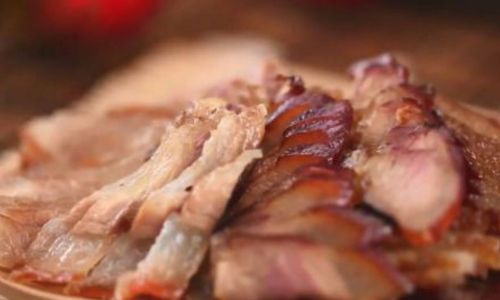
Overcooking can lead to dry, brittle bacon. Keep a close eye on your bacon during the smoking and cooking processes, and adjust the temperature and time as needed.
2 Managing Fat Rendering
Too much fat can make your bacon greasy. To control fat rendering, trim excess fat before seasoning and use a rack in your smoker or oven to allow fat to drip away from the meat.
3 Storing for Longevity
Proper storage is key to maintaining the quality of your smoked bacon. Always wrap it tightly to prevent air exposure, and store it in the coldest part of your refrigerator.
4 Experimenting with Flavors
Don’t be afraid to experiment with different seasoning blends and smoking woods. The possibilities are endless, and you may discover a new favorite flavor combination.
Conclusion
Crafting smoked bacon is a rewarding culinary endeavor that combines skill, patience, and a love for flavor. By following this comprehensive guide, you’ll be able to create bacon that is not only delicious but also bursting with personality. Whether you’re a seasoned chef or a home cook looking to impress, the art of smoking bacon offers a world of possibilities. So, gather your ingredients, fire up your smoker, and embark on a journey to create the perfect strip of bacon. Happy smoking!
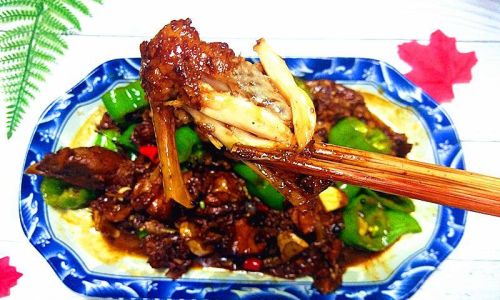
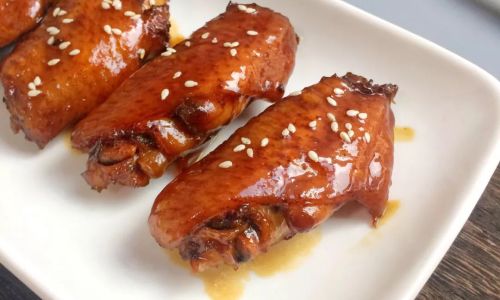

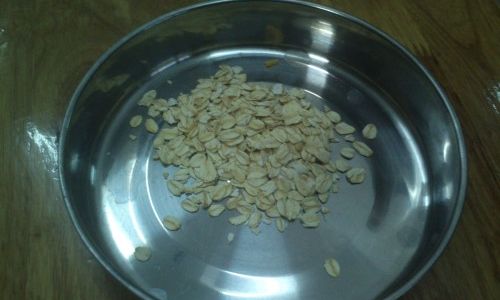

0 comments